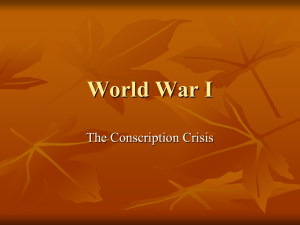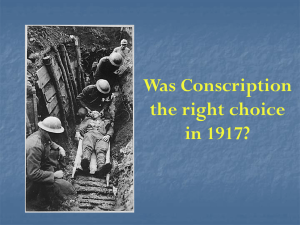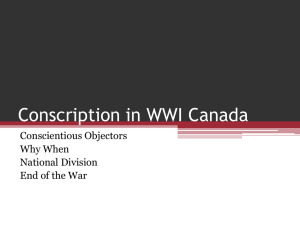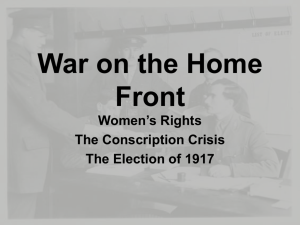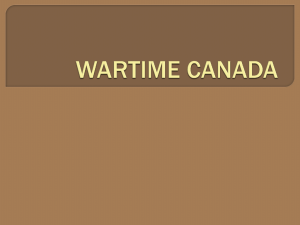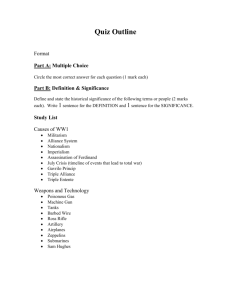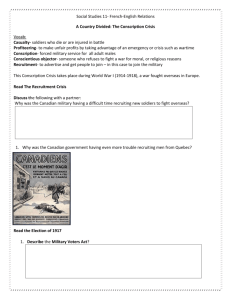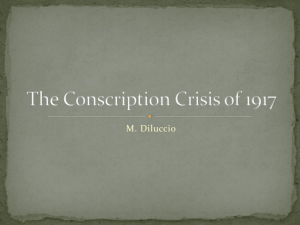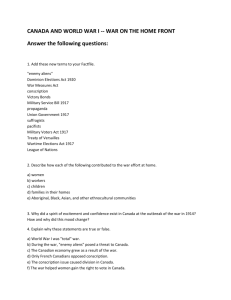5 Conscription Crisis
advertisement
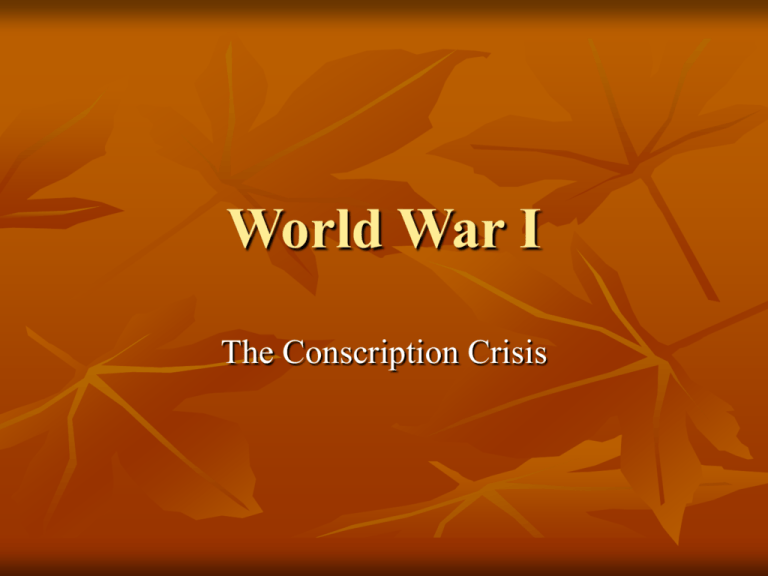
World War I The Conscription Crisis Background Canadians expected WWI to be over quickly, many thought by the end of 1914 War dragged on, casualty numbers increased Fewer volunteers enlisting in the military By 1917, PM Robert Borden decided conscription in Canada was necessary Conscription – mandatory military service Borden had previously promised no conscription Introduced the Military Service Act (exceptions at first – conscientious objectors, farmers, etc.) Opposition to Conscription Quebec Lowest voluntary enlistment rate in Canada Few officers spoke French Most French soldiers put in English regiments Exception: Twenty-Second Battalion (Van Doos) Many French-Canadians still angry over Ontario restricting French in schools (1912) Most French-Canadians did not feel connected to Britain or France Conscription forces them to fight in someone else’s war Henri Bourassa Led by Quebec politician Henri Bourassa Believed that WWI had little to do with Canada Too many soldiers and money spent already, more would endanger Canada’s economic future and decrease the country’s autonomy Canadians should not be forced to fight in a foreign war Opposition to Conscription Prairies Factories Farmers needed sons and workers to work on their farms Industrial workers felt they were already contributing, didn’t want to give up jobs British Columbia Vancouver Island coal miners already struggling to provide for family, conscription meant less money Labour leader Ginger Goodwin hid, eventually killed 1917 Election PM Borden calls an election to check for support of conscription Passes new legislation first Military Voters Act – men and women serving in Europe can vote Wartime Elections Act – all Canadian women related to soldiers allowed to vote; conscientious objectors and recent immigrants from enemy countries not allowed to vote 1917 Election 1917 Election 1917 Election PM Borden (Conservative) invited pro-conscription Liberals to join him and his Cabinet in a Union Government Liberal Party leader Wilfrid Laurier against conscription, unless Canada directly attacked or invaded Union Government won, but country divided Liberals won 95% of Quebec seats (results on p. 41) Union Government won 88% of seats outside of Quebec Anti-conscription riots in Quebec City, Easter 1918 Four demonstrators dead, ten soldiers wounded Anti-Conscription Riots Result of Conscription 404,000 men conscripted 380,500 applied for exemptions (medical, etc.) 130,000 eventually were enlisted 25,000 reached France before the war ended
